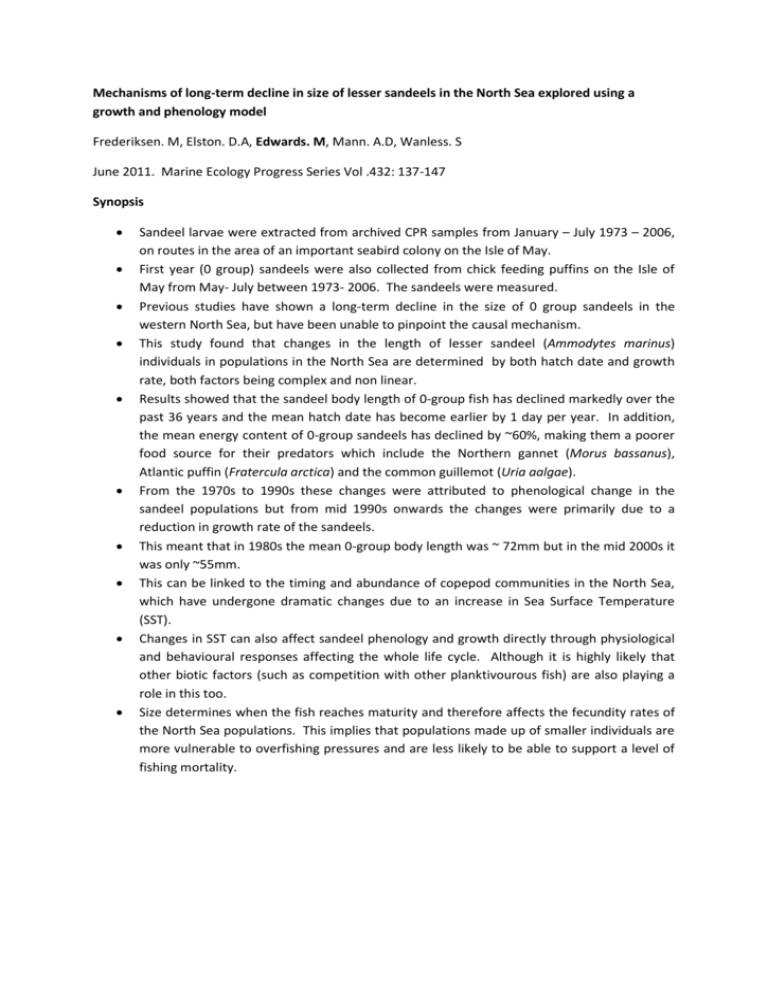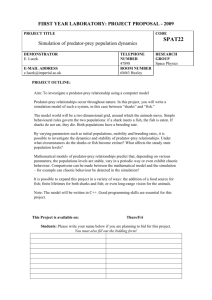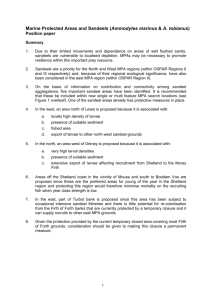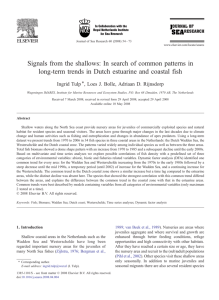Mechanisms of long-term decline in size of lesser sandeels in the
advertisement

Mechanisms of long-term decline in size of lesser sandeels in the North Sea explored using a growth and phenology model Frederiksen. M, Elston. D.A, Edwards. M, Mann. A.D, Wanless. S June 2011. Marine Ecology Progress Series Vol .432: 137-147 Synopsis Sandeel larvae were extracted from archived CPR samples from January – July 1973 – 2006, on routes in the area of an important seabird colony on the Isle of May. First year (0 group) sandeels were also collected from chick feeding puffins on the Isle of May from May- July between 1973- 2006. The sandeels were measured. Previous studies have shown a long-term decline in the size of 0 group sandeels in the western North Sea, but have been unable to pinpoint the causal mechanism. This study found that changes in the length of lesser sandeel (Ammodytes marinus) individuals in populations in the North Sea are determined by both hatch date and growth rate, both factors being complex and non linear. Results showed that the sandeel body length of 0-group fish has declined markedly over the past 36 years and the mean hatch date has become earlier by 1 day per year. In addition, the mean energy content of 0-group sandeels has declined by ~60%, making them a poorer food source for their predators which include the Northern gannet (Morus bassanus), Atlantic puffin (Fratercula arctica) and the common guillemot (Uria aalgae). From the 1970s to 1990s these changes were attributed to phenological change in the sandeel populations but from mid 1990s onwards the changes were primarily due to a reduction in growth rate of the sandeels. This meant that in 1980s the mean 0-group body length was ~ 72mm but in the mid 2000s it was only ~55mm. This can be linked to the timing and abundance of copepod communities in the North Sea, which have undergone dramatic changes due to an increase in Sea Surface Temperature (SST). Changes in SST can also affect sandeel phenology and growth directly through physiological and behavioural responses affecting the whole life cycle. Although it is highly likely that other biotic factors (such as competition with other planktivourous fish) are also playing a role in this too. Size determines when the fish reaches maturity and therefore affects the fecundity rates of the North Sea populations. This implies that populations made up of smaller individuals are more vulnerable to overfishing pressures and are less likely to be able to support a level of fishing mortality.









